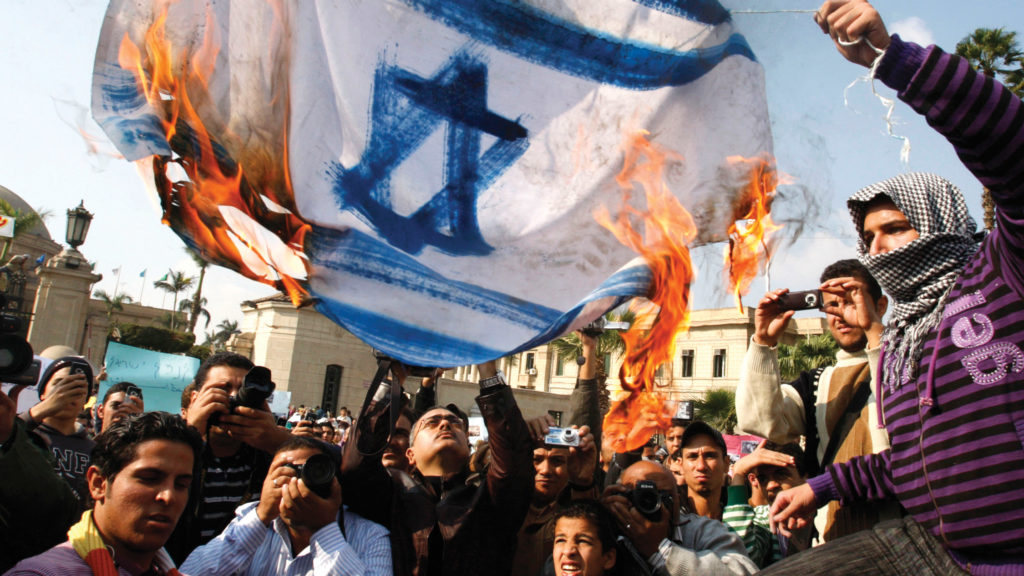Historical Agency
Yeshua ben Ismail, a young Jewish merchant in 11th-century Alexandria, had a reputation of being difficult and possibly unethical, but nobody could question his success. Consequently, he was able to secure a partnership with Khalluf ben Musa, a leading Jewish merchant in Qayrawan, in present-day Tunisia. In this arrangement, each man was empowered to act as an agent for the other. Khalluf agreed to take charge of some of Yeshua’s cloves and sell them on the latter’s behalf in Qayrawan, and, in exchange, Yeshua would sell Khalluf’s goods in Alexandria. Khalluf would come to regret ignoring the warnings he received about working with Yeshua. Their correspondence, preserved in the Cairo Geniza, shows increasing distrust and frustration on both sides. Khalluf tried to break off their agreement, and they eventually ended up in court.
Among the many papers discovered in the Cairo Geniza are documents, including the letters between Khalluf and Yeshua, that reveal the ubiquity of this kind of partnership. Each partner would act as an unpaid business agent for the other without a cut of the profits. Instead, there was an understanding, usually based upon verbal agreements or informal correspondence rather than written contracts, that the partners would both benefit from this mutual agency. Such partnerships were valuable in the dynamic mercantile economy of the medieval Mediterranean world in which traders from North Africa would frequent ports from India to Western Europe. To succeed in this environment, reliable agents were irreplaceable. A merchant could not be everywhere at once, and if he was to take advantage of rapid fluctuations in the market, he needed to have his merchandise in the hands of reliable people in other locations who could sell it for him. As evidence from both Muslim and Jewish sources indicates, this quid pro quo arrangement was central to the economic system of the medieval Islamic world.
Mark Cohen is not the first historian to take note of such partnerships; the case of Yeshua and Khalluf (which Cohen does not mention) comes from Jessica L. Goldberg’s excellent study, Trade and Institutions in the Medieval Mediterranean: The Geniza Merchants and their Business World, where it is discussed at length. Unlike Goldberg and the other Geniza scholars who have studied this form of partnership, including the pioneering S. D. Goitein, Cohen is not primarily interested in uncovering the detailed workings of the economic practices of the past. Rather, he focuses on how such “customs of the merchants” affected the composition of a halakhic guidebook still widely consulted to this day. In the process, he raises important questions both about the nature of change and adaptation in the development of Jewish law and how to situate the work of Moses Maimonides in his historical context.

This form of business agency was still in wide use in the late 12th century, when Maimonides was compiling the Mishneh Torah in Cairo. In doing so, he aimed to reorganize the complete corpus of Jewish law into a single systematic and comprehensive code so that, as he remarks in the introduction, a person could just read the Mishneh Torah and the Torah itself; no other book of law, including the Talmud, would be necessary to study. In “Laws of Agents and Partners” (Hilkhot sheluchin ve-shutafin 9:5), he discusses the case of a person conducting business through the use of an agent and allows that person to demand that the agent swear an oath affirming that he did not steal any merchandise or embezzle any money while he was in control of it. Maimonides portrays this ruling as growing organically from an established rabbinic law about partners, who may demand oaths from each other, but, in fact, previous halakha had treated agents and partners as entirely separate categories. Cohen persuasively argues that Maimonides yoked them together precisely because business arrangements like that of Yeshua and Khalluf were so common in his world.
“But this is a little problematic,” writes the 16th-century scholar David ibn Abi Zimra (Radbaz) in his commentary to Maimonides’s ruling. Swearing an oath in court was a grave undertaking; Radbaz anxiously exclaims that “if this [ruling] is true, nobody will want to serve as an agent for his fellow because he will be obligated to swear afterward!” Indeed, the Talmud is generally quite reluctant to require an agent to swear an oath, and there is no clear precedent for it in earlier rabbinic sources. Consequently, many later halakhic authorities either dispute Maimonides’s judgement or severely qualify it; Solomon ben Abraham ibn Adret (Rashba), in 13th-century Catalonia, vehemently refutes it,and Radbaz himself writes that the agent can avoid this predicament by stipulating in advance that he will be exempt from an oath.
Cohen believes that the reality of economic life in Maimonides’s time pushed him into this questionable decision. These partnerships of agency, critical to commercial operations in this period, would have been difficult to fit into existing halakha. The Talmud simply does not hold an agent to the same standards of accountability as it does a partner. Previous Jewish law would have regarded Yeshua and Khalluf as mere agents of each other, without the kind of legal protections and recourse necessary to make such an arrangement work, without the ability to supply legal remedies when it didn’t. As a result, Jews would often turn to local Muslim judges to resolve disputes. Maimonides, as Cohen demonstrates, was quite familiar with this type of partnership, so he associated agents with partners—note that he calls this entire section the “Laws of Agents and Partners,” despite there being little direct connection between the two in the Talmud or later rabbinic literature. In transferring the oath of partners to a case of agency, Maimonides provided Jewish courts with a means of enforcement for this arrangement.
This resolution represents a model for Cohen’s broader historical argument. The Talmud assumed an economy centered around agriculture or local trade. As such, Cohen explains, it could not respond to all the demands of the more dynamic, long-distance mercantile system of the Islamic world in which Maimonides lived. This situation forced Jewish traders into Islamic courts, which were equipped to deal with such partnerships, a development that horrified Maimonides, who rails against visiting non-Jewish courts in Mishneh Torah in language even more forceful than that used in the Talmud forbidding this practice. Maimonides, Cohen hypothesizes, hoped “to bring the Jewish merchant back into the halls of Jewish justice rather than have him cross the line to plead his case in the Islamic courtroom,” by yoking the halakhic concepts of partnership and agency to reflect the economic world in which he lived.
In his opening and closing chapters, Cohen briefly discusses the question of legal innovation in more theoretical terms. He notes that in “harmonizing Jewish law with contemporary business practices, [Maimonides] was, in fact, doing what responsible halakhic authorities (and Islamic jurists) have always done: adapt the law to the needs of the time.” His treatment of Mishneh Torah, then, acts as an extended test-case for how such a medieval authority could adapt the law in contrast to other possible models, such as the earlier work of the Babylonian geonim, who Cohen cites throughout this book, or the legal commentaries of medieval Ashkenazi scholars such as Rashi and the tosafists, who Cohen briefly mentions in his conclusion.
Importantly, though, Mishneh Torah was a code of law, meant to succinctly present the law as it should be in its universal form, as opposed to the case law established by a particular decision, or talmudic commentaries which address a particular rabbinic passage. This raised the stakes of innovation. Even if a responsum can be adduced as precedent for later cases, it can also be rejected as unconnected to the case at hand. The same cannot be done with a legal code. One can disagree with a ruling in a code, as Rashba does in the case of the agent’s oath, but its contents cannot be set aside as being limited to specific cases. Cohen’s study raises the deep question of how practices of a particular historical time and place make their way into the pristine, universal presentation of a law code, and what that means for its ongoing validity.
Of course, accusations that Maimonides was too creative were raised in his lifetime. Maimonides responds in several of his writings, avowing that Mishneh Torah introduced nothing new into halakha and that his code simply serves as a handy reference guide for established law. The evidence in Maimonides and the Merchants might imply that Maimonides was obfuscating a bit, but, in the conclusion, Cohen wonders “whether Maimonides thought that he was advancing novel opinions or whether he believed that he was merely eliciting the intended meaning of the halakhot that he ‘updated’ or modified, following the time-honored method of rabbinic exegesis, expecting readers to trust his pious aims.” Cohen cautiously avoids taking a definitive stand on this question, but he does suggest that, “Prima facie, we may hypothesize that, at least on a conscious level, Maimonides did not believe that he was prescribing new law but rather, expanding what he believed (and wanted others to believe) to be the intention of the old law.”
Only someone with Cohen’s considerable facility with Jewish law and deep knowledge of the Cairo Geniza materials could undertake such a study, though this book is not without at least one error. In his discussion of the agent’s oath, Cohen mentions that the great 16th-century halakhic codifier Joseph Karo cites Rashba’s objections in both his commentary to Mishneh Torah (Kesef Mishneh) and in his commentary to the Tur (Beit Yosef). He then writes that Karo “omits Maimonides’ ruling from his own code, the Shulchan Arukh, altogether,” which, if it were true, would underline Cohen’s claim about the unprecedented nature of Maimonides’s ruling. In truth, though, Karo quotes Maimonides’s ruling almost verbatim in the Shulchan Arukh, and, though he does mention that there exists a dissenting opinion, his presentation implies that he would incline to agree with Maimonides.
This is a minor point which does not in any way diminish the persuasiveness of Cohen’s argument, but it does bring up the issue of the ways such rulings were adopted in later halakha. Cohen sometimes mentions the reception of Maimonides’s original rulings by later scholars, particularly when that reception is negative, and he often points out the ways Maimonides’s commentators try to read those rulings back into the Talmud. He generally does not, however, trace the effect such rulings had on halakha going forward when they were accepted by subsequent jurists. For instance, since both the Tur and the Shulchan Arukh include Maimonides’s rule about the agent’s oath, the commentators on those codes are left to sort out the repercussions for other laws.
Reading Mishneh Torah in the context of the medieval Mediterranean Islamic world is not new, and Cohen himself has previously done so in his study of charity in Maimonidean law. Other scholars have looked at Mishneh Torah in relation to contemporaneous Islamic law with often fascinating results. But, in focusing on the Geniza documents and their unique ability to tell us about the practical details of economic life in Maimonides’ time, Cohen takes a different approach. He moves Maimonides’s Muslim counterparts in Islamic jurisprudence to the background and focuses instead on the lived experience of the Jewish audience for whom the Mishneh Torah was written.
Suggested Reading

Israel and the Old-New Middle East
The social and political realities of the Middle East make democracy unlikely. A rough neighborhood may be getting rougher.

All or Nothing?
As Nathan Englander no doubt knows, it is impossible to read kaddish.com without thinking of his own well-publicized background as a yeshiva student who turned away from Orthodoxy.

Second-Hand Jew: A Self-Portrait in Scenes
I took my first novel to Israel with me, and when a suitcase bomb exploded twenty meters away from me at the Munich airport, I shielded the manuscript with my body. My sister didn’t read it until just before I left. Then she said: “I thought Thomas Mann was dead. Anyway, if you ask me, he’s not a good example.”
Learning from History
Jonathan Sarna looks back at a time when both Reform and Orthodox Judaism in America seemed imperiled.
Comments
You must log in to comment Log In